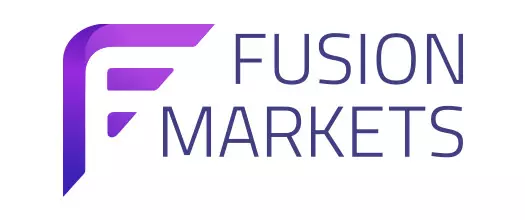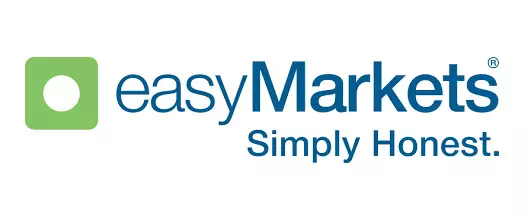Our team of expert traders has tested several regulated and trustworthy Australian trading platforms and compiled a top list of the best among them. Each trading platform operating in Australia received a quality score based on several factors, including Trustpilot rating, regulation, fees and commissions, available trading platforms, customer service and more.
Australia is not unaffected by the rapid development of trading, and some even describe it as a trading powerhouse, as some of the biggest and most established brokers seek to enter its market. This is because Australia’s regulatory climate is market-friendly, which encourages more and more brokers to target it.
Although trading is tightly regulated in the country, the laws and regulations in place are not oppressive, and traders are offered access to a diverse range of instruments, leverage, and some of the most favourable trading conditions.
The number of brokers that accept traders from the jurisdiction increases by the minute, and, as a result, traders might feel overwhelmed when the time comes to pick a brokerage that accommodates them.
| Regulator | Australian Securities and Investments Commission |
| Maximum Leverage of Forex | 1:30 |
| Maximum Leverage of Stocks | 1:5 |
| Maximum Leverage of CFDs | 1:20 |
The best Australian brokers
Naturally, modern investors want to ensure that they can access global markets quickly and without hassle; therefore, they tend to invest considerable time in searching for a brokerage that meets all their requirements.
The Australia-friendly broker traders ultimately choose depends entirely on their needs and preferences. To make things easier, we have compiled a list of ten of the most popular brokerages that accept clients from the country.
When creating the list, we paid attention to the product range, fees, available payment methods, offered platforms, regulations and leverage, to name a few.
 TRADE NOWREAD REVIEWPlatformscTrader, DupliTrade, Fusion+ Copy Trading, MetaFX, MetaTrader 4, MetaTrader 5, TradingViewMin Deposit$0FeesNo deposit and cashout feesDeposit MethodsCommissions
TRADE NOWREAD REVIEWPlatformscTrader, DupliTrade, Fusion+ Copy Trading, MetaFX, MetaTrader 4, MetaTrader 5, TradingViewMin Deposit$0FeesNo deposit and cashout feesDeposit MethodsCommissions- $2.25 per lot commission
- 0.45c for mini lots
SpreadEUR/USD: AVG 0.93 pips, GBP/USD: AVG 1 pips, USDJPY: AVG 1.7 pipsWithdrawal MethodsLeverage EU1:30Leverage non-EU1:500 (ASIC | Pro Account), 1:30 (ASIC | Retail Account), 1:500 (VFSC | Retail Account)InstrumentsCommodity CFDs, Crypto CFDs, Forex CFDs, Index CFDs, Metal CFDs, Stock CFDsAll financial products involve risk and you should ensure you understand the risk involved as certain financial products may not be suitable for everyone. Trading in margin foreign exchange and derivatives carries a high level of risk and you may incur a loss that is far greater than the amount you invested. Past performance of any product described on this website is not a reliable indication of future performance.Fusion Markets has established itself as a top choice for Australian traders, and when they created it, the industry veterans behind it adhered to several simple principles. The award-winning broker gives its clients access to a slew of instruments, including energy, precious metals, Forex, cryptocurrency CFDs, equity indices, and share CFDs.
Instead of making trading even more complicated by giving traders a choice among too many account types, Fusion Markets prefers to offer a no-frills experience by allowing them to choose between Classic and Zero accounts.
One of the broker’s goals is to radically lower the costs its clients incur, and its users pay a commission of just $2.25 per lot. The technology used also matters, and to deliver a seamless trading experience, Fusion Markets relies on MetaTrader 4 and MetaTrader 5, two of the most frequently used platforms. To offer flexibility to its clients, the broker allows them to opt for WebTrader and mobile trading apps.
It is an all-around broker that allows its clients to pick from a number of major currencies to set up their accounts in, including AUD, CAD, EUR, GBP, JPY, SGD, THB, and USD. The available banking methods include Visa, Mastercard, PayPal, AstroPay, and Skrill. Depositing and withdrawing funds via cryptocurrencies is also possible. Although there is no minimum deposit requirement, users of the brokerage are advised to add at least $1,500 to their balance.
If traders cannot decide whether the broker will live up to their expectations, they can register for a demo account first instead of opening a live account.
 TRADE NOWREAD REVIEWRegulatorsPlatformsMetaTrader 4, MetaTrader 5, Proprietary Mobile, Proprietary Web2. PepperstoneMin Deposit$0FeesNo deposit and withdrawal feesDeposit MethodsCommissions
TRADE NOWREAD REVIEWRegulatorsPlatformsMetaTrader 4, MetaTrader 5, Proprietary Mobile, Proprietary Web2. PepperstoneMin Deposit$0FeesNo deposit and withdrawal feesDeposit MethodsCommissions- $6 round-trip for cTrader and TradingViewusers
- MT4/MT5 Razor account commissions - AUD 0.04 (AUD 0.08 round turn) per 0.01 lots
- AUD 3.50 (AUD 7 round turn) per 1 lot
SpreadEUR/USD: AVG 1.1 pips, GBP/USD: AVG 1.3 pips, USDJPY: AVG 1.3 pipsWithdrawal MethodsLeverage EU1:500 (CySEC | Pro Account), 1:30 (CySEC | Retail Account), 1:30 (FCA | Retail Account)Leverage non-EU1:500 (SCB | Pro Account), 1:30 (ASIC | Retail Account), 1:30 (DFSA | Retail Account), 1:200 (SCB | Retail Account)InstrumentsCommodity CFDs, Crypto CFDs, Energy CFDs, Forex CFDs, Index CFDs, Metal CFDs, Stock CFDs*CFDs are complex instruments and come with a high risk of losing money rapidly due to leverage. 86.5% of retail investor accounts lose money when trading CFDs with this provider. You should consider whether you understand how CFDs work and whether you can afford to take the high risk of losing your money.Operating since 2010, Pepperstone has quickly evolved into one of the largest and most preferred forex brokers worldwide. With several prestigious awards to its name, the broker allows its customers to make the most of every trading opportunity by offering flexible funding options, low costs, and multiple account types.
What matters most to traders is the diversity of instruments they can access after they join the community of their chosen broker, and Pepperstone is well aware of this. Backed by lightning-fast execution and top-notch customer support, the broker provides access to more than 1,200 CFD instruments, including commodities, indices, shares, cryptocurrencies, and currency indices.
The broker goes the extra mile to provide its clients with tech-enabled trading, ensuring that they have all the resources needed to take advantage of opportunities in the global markets. To this end, brokerage clients can choose from several trading platforms, including cTrader, MetaTrader 4, MetaTrader 5, and Capitalise.ai. The broker has also ensured that there is an account type to suit every trader, with Razor and Standard accounts available.
The broker receives oversight from multiple regulatory authorities, including BaFin, CMA, CySEC, DFSA, FCA, and SCB. Pepperstone also caters to the Australian market and is regulated by the Australian Securities and Investments Commission.
 TRADE NOWREAD REVIEWRegulatorsCFTC (United States, # 0516820), CySEC (Cyprus, # 120/10), DFSA (United Arab Emirates, # F003484), FSCA (South Africa, # 49976), IFSC (Belize, # 000261/27), FSCM (Mauritius, # GB23202700)PlatformsMetaTrader 4, MetaTrader 4 MultiTerminal, MetaTrader 5, Proprietary Mobile, Proprietary Web3. XM GroupMin Deposit$5Fees
TRADE NOWREAD REVIEWRegulatorsCFTC (United States, # 0516820), CySEC (Cyprus, # 120/10), DFSA (United Arab Emirates, # F003484), FSCA (South Africa, # 49976), IFSC (Belize, # 000261/27), FSCM (Mauritius, # GB23202700)PlatformsMetaTrader 4, MetaTrader 4 MultiTerminal, MetaTrader 5, Proprietary Mobile, Proprietary Web3. XM GroupMin Deposit$5Fees- No deposit fees
- Inactivity fee
Deposit MethodsCommissionsNo commissionSpreadEUR/USD: AVG 1.2 pips, GBP/USD: AVG 1.5 pips, USDJPY: AVG 1.4 pipsWithdrawal MethodsLeverage EU1:30 (CySEC | Retail Account)Leverage non-EU1:1000 (IFSC | Retail Account)InstrumentsBonds CFDs, Commodity CFDs, Crypto CFDs, Energy CFDs, ETF CFDs, Forex CFDs, Forex Options, Index CFDs, Index Options, Metal CFDs, Share CFDs, Stock CFDs, Stock Options, US Stock OptionsRisk Warning: Margin forex and CFD trading involves significant risk to your invested capital. Our FSG and PDS should be considered before deciding to enter into any derivative transactions with Trading Point of Financial Instruments Pty Limited.With more than 30 industry awards to its name, XM is one of the Australia-facing brokers that provide superior and fair trading services to clients from over 190 countries. With more than 1,000 tradable instruments across six asset classes, the broker allows its clients to trade Forex, metals, CFDs on stocks, and energy products. Clients of the brokerage keep coming back because they have the opportunity to trade these instruments at any time and from any place by using XM’s WebTrader.
The selection of available trading platforms includes MetaTrader 4 and MetaTrader 5, which come with a number of attention-grabbing features and tutorial videos designed for inexperienced traders. XM’s trading account types include Micro, Standard, and XM Ultra Low, all of which are designed to work well for traders of every experience level. Regardless of the account type traders choose, they will be pleased to know that AUD is among the base currency options.
The broker has also made it exceptionally easy for traders to find everything they might need to start their trading journey on the right foot, as the Learning Center is overflowing with webinars, tutorials, and videos.
Additionally, complete novices can make use of a demo account with a $100,000 virtual balance, allowing them to get a feel for the services offered without losing sleep over their funds.
With live chat available in more than 30 languages, the broker clearly wants to ensure that any questions traders might have are answered in no time. XM is not only a globally renowned broker but also a brand traders can trust, as it is regulated by multiple authorities, including the Australian Securities and Investments Commission.
 TRADE NOWREAD REVIEWRegulators
TRADE NOWREAD REVIEWRegulators- Australian Securities & Investments Commission (ASIC) AFSL no. 428901
- Financial Sector Conduct Authority (“FSCA”) of South Africa
- VFSC
PlatformsMetaTrader 4 and MetaTrader 54. VantageMin Deposit$50FeesNo deposit feesDeposit MethodsCommissions- $0 commission for Standard accounts
- $1 per lot per side for Raw accounts
SpreadSpreads from 0.0 pipsWithdrawal MethodsLeverage EU1:30Leverage non-EU- 1:30 for Australia
- 1:500
- 1:100
InstrumentsBonds, Forex, energy commodities, precious metals, cryptocurrencies, indices, soft commodities, ETFs, share CFDsRisk Warning: Trading derivatives carries significant risks. It is not suitable for all investors and if you are a professional client, you could lose substantially more than your initial investment. When acquiring our derivative products, you have no entitlement, right or obligation to the underlying financial assets. Past performance is no indication of future performance and tax laws are subject to change.Vantage is an ASIC-regulated CFD broker that offers its clients access to more than 1,000 tradable instruments. The broker has over 10 years of industry experience and ranks among the most popular trading service providers in Australia.
Offering premium-level services, Vantage has introduced account types suitable for all trading levels. Depending on their experience, traders can choose between Standard and Raw accounts. Those who opt for a Pro account will receive even greater benefits, including faster execution speeds, a personal account manager, tailor-made bonuses, and special incentives. The choice of base currencies may not be the most extensive, but traders from Australia can use their local currency.
Payments to and from the brokerage are processed quickly and without delays. When moving funds within Vantage, traders can use Mastercard, Visa, PayPal, PayID, POLi, and BPay.
The broker has been recognized worldwide, and the slew of accolades the company has garnered proves this. The multi-asset broker allows its clients to trade cryptocurrencies, Forex, soft commodities, precious metals, ETFs, share CFDs, bonds, and energy commodities.
Traders can access all these instruments on MetaTrader 4 and MetaTrader 5. Additionally, the broker enables its clients to trade whenever and wherever they prefer by using the official MetaTrader apps. Traders can also access their MT4 and MT5 trading accounts anytime, anywhere through WebTrader.
 TRADE NOWREAD REVIEWRegulatorsCySEC (Cyprus, # 079/07), FSAS (Seychelles, # SD056), FSCA (South Africa, # 54018), ASIC (Australia, # 246566), BVIFSC (Virgin Islands, British, # SIBA/L/20/1135)PlatformsMetaTrader 4, MetaTrader 5, Proprietary Mobile, Proprietary Web, TradingView5. easyMarketsMin Deposit$25 ($2,000 for MT4 Premium, $10,000 for MT4 VIP)FeesNo account feesDeposit MethodsCommissionsNo commissionSpreadEUR/USD: MIN 0.8 pips, EUR/USD: AVG 0.7 pips, GBP/USD: MIN 1.4 pips, GBP/USD: AVG 0.9 pips, USDJPY: MIN 1.5 pips, USDJPY: AVG 2 pipsWithdrawal MethodsLeverage EU1:500 (CySEC | Pro Account), 1:30 (CySEC | Retail Account)Leverage non-EU1:500 (ASIC | Pro Account), 1:30 (ASIC | Retail Account), 1:2000 (FSAS | Retail Account)InstrumentsCommodity CFDs, Crypto CFDs, Forex CFDs, Forex Forwards, Forex Options, Index CFDs, Metal CFDs, Metal Options, Share CFDsTrade Responsibly: CFDs and Options are complex instruments and come with a high risk of losing money rapidly due to leverage. 74% of retail investor accounts lose money when trading CFDs with this provider. You should consider whether you understand how CFDs and Options work and whether you can afford to take the high risk of losing your money.
TRADE NOWREAD REVIEWRegulatorsCySEC (Cyprus, # 079/07), FSAS (Seychelles, # SD056), FSCA (South Africa, # 54018), ASIC (Australia, # 246566), BVIFSC (Virgin Islands, British, # SIBA/L/20/1135)PlatformsMetaTrader 4, MetaTrader 5, Proprietary Mobile, Proprietary Web, TradingView5. easyMarketsMin Deposit$25 ($2,000 for MT4 Premium, $10,000 for MT4 VIP)FeesNo account feesDeposit MethodsCommissionsNo commissionSpreadEUR/USD: MIN 0.8 pips, EUR/USD: AVG 0.7 pips, GBP/USD: MIN 1.4 pips, GBP/USD: AVG 0.9 pips, USDJPY: MIN 1.5 pips, USDJPY: AVG 2 pipsWithdrawal MethodsLeverage EU1:500 (CySEC | Pro Account), 1:30 (CySEC | Retail Account)Leverage non-EU1:500 (ASIC | Pro Account), 1:30 (ASIC | Retail Account), 1:2000 (FSAS | Retail Account)InstrumentsCommodity CFDs, Crypto CFDs, Forex CFDs, Forex Forwards, Forex Options, Index CFDs, Metal CFDs, Metal Options, Share CFDsTrade Responsibly: CFDs and Options are complex instruments and come with a high risk of losing money rapidly due to leverage. 74% of retail investor accounts lose money when trading CFDs with this provider. You should consider whether you understand how CFDs and Options work and whether you can afford to take the high risk of losing your money.Operating since 2001, easyMarkets is a broker regulated by the ASIC in the Asia-Pacific region and by CySEC in Europe. The trading service provider gives its clients quick, hassle-free access to a host of markets, and once they complete the registration process, they can start trading cryptocurrencies, forex, precious metals, commodities, shares, and indices. Users of the brokerage can trade all these through MetaTrader 4, MetaTrader 5, easyMarkets’ web app, or its dedicated mobile apps.
Since its launch, the broker has sought to provide traders with a platform that is user-friendly, yet powerful and versatile enough to meet the requirements of seasoned traders. At easyMarkets, traders are promised a complete trading experience, which is why they can choose from several account types. Depending on their skill level, traders can opt for VIP, Premium, or Standard accounts.
No matter which account type traders pick, they will benefit from leverage of up to 1:30 and will not incur extra fees or commissions.
Australian traders who choose easyMarkets for their trading can make use of several unique tools, including Freeze Rate, Free Guaranteed Stop Loss, and dealCancellation. In addition, there are a number of tools that will keep traders informed, including trading charts, trending news, live currency rates, Inside Viewer, and notifications.
Traders can continually improve their skills and knowledge thanks to the educational materials available on the broker’s website. Another way to get familiar with the broker without risking their funds is to create a demo account first.
The choice of base account currencies is extensive, and the good news is that Australian traders do not need to pay currency conversion fees, as AUD is among the accepted account currencies.
- 6. CMC MarketsMin Deposit$0FeesNo deposit and withdrawal feesDeposit MethodsCommissions0.1% on sharesSpreadEUR/USD: MIN 0.5 pips, EUR/USD: AVG 0.6 pips, GBP/USD: MIN 0.9 pips, GBP/USD: AVG 1.1 pips, USDJPY: MIN 0.7 pips, USDJPY: AVG 1.3 pipsWithdrawal MethodsLeverage EU1:500 (FCA | Pro Account), 1:30 (BaFin | Retail Account), 1:30 (FCA | Retail Account)Leverage non-EU1:500 (ASIC | Pro Account), 1:30 (ASIC | Retail Account), 1:20 (MAS | Retail Account)InstrumentsCommodity CFDs, Crypto CFDs, Energy CFDs, ETF CFDs, Forex CFDs, Index CFDs, Metal CFDs, Share CFDs, Stock CFDs, US Stock CFDsSpread bets and CFDs are complex instruments and come with a high risk of losing money rapidly due to leverage. 77% of retail investor accounts lose money when spread betting and/or trading CFDs with this provider. You should consider whether you understand how spread bets and CFDs work and whether you can afford to take the high risk of losing your money.
CMC Markets is an instantly recognizable broker that caters to a wide array of markets, including the Australian market. Authorized by ASIC, the broker allows its clients to use several trading platforms and a number of tools. In addition to MetaTrader 4 and Next Generation Trading, traders can take advantage of powerful and advanced tools like Autochartist.
Offering choice and simplicity, CMC Markets allows its clients to access some of the world’s biggest markets and trade more than 10,000 instruments anytime, anywhere. The range of tradable products is sure to appeal to traders of all experience levels, as they can trade Forex, commodities, shares, indices, treasuries, cryptocurrencies, and share baskets.
If traders want to brighten their future, they can trade shares. With over 35,000 shares on offer, traders will not be required to pay brokerage on the Japanese, UK, and US markets.
CMC Markets’ award-winning trading apps are suitable for traders who own iOS- and Android-powered devices, and they provide mobile-optimized charting with more than 40 technical indicators and drawing tools, along with full order-ticket functionality.
Experienced traders can trade with the ALPHA advantage, through which they will receive premium brokerage rates, free access to the broker’s Pro platform and dynamic data, and priority servicing. If clients of CMC Markets want to better understand how trading works before they dive in, they should take a look at the Education & Insights section. If traders have questions, they can consult the detailed FAQ section or get in touch with customer support via live chat or over the phone.
 TRADE NOWREAD REVIEWRegulatorsCFTC (United States, # 0509630), DFSA (United Arab Emirates, # F001780), FCA (United Kingdom, # 944492), FFAJ (Japan), FINMA (Switzerland, # IG Bank S.A.), FMA (New Zealand, # 684191), FSCA (South Africa, # 41393), JFSA (Japan, # 9010401051715), MAS (Singapore, # 1489), ASIC (Australia, # 515106), BaFin (Germany, # 148759), BMA (Bermuda, # 54814)PlatformsL2 Dealer, MetaTrader 4, Proprietary Web, ProRealTime, TradingView7. IGMin Deposit$50Fees1% charge for Visa and 0.5% charge for MastercardDeposit MethodsCommissionsCommission fees from $7 or 0.08%SpreadEUR/USD: AVG 1.13 pips, EUR/USD: MIN 0.6 pips, GBP/USD: AVG 2.38 pips, GBP/USD: MIN 0.9 pips, USDJPY: AVG 1.8 pips, USDJPY: MIN 0.7 pipsWithdrawal MethodsLeverage EU1:222 (BaFin | Pro Account), 1:30 (BaFin | Retail Account), 1:30 (FCA | Retail Account)Leverage non-EU1:30 (ASIC | Retail Account), 1:200 (BMA | Retail Account)InstrumentsBond Futures, Bond Options, Bond Spread Betting, Bonds CFDs, Commodity CFDs, Commodity Futures, Commodity Options, Commodity Spread Betting, Crypto CFDs, Crypto Options, Crypto Spread Betting, Currency Futures, Energy CFDs, Energy Futures, Energy Options, Energy Spread Betting, ETF CFDs, ETF Options, ETF Spread Betting, Forex CFDs, Forex Options, Forex Spread Betting, Index CFDs, Index Futures, Index Options, Index Spread Betting, Interest Rate Futures, Metal CFDs, Metal Futures, Metal Options, Metals Spread Betting, Share CFDs, Stock CFDs, Stock Options, Stock Spread Betting, US Stock CFDs, US Stock Options, US Stock Spread BettingSpread bets and CFDs are complex instruments and come with a high risk of losing money rapidly due to leverage. 78% of retail investor accounts lose money when trading spread bets and CFDs with this provider. You should consider whether you understand how spread bets and CFDs work, and whether you can afford to take the high risk of losing your money. Options and turbo warrants are complex financial instruments and your capital is at risk. Losses may be extremely rapid.
TRADE NOWREAD REVIEWRegulatorsCFTC (United States, # 0509630), DFSA (United Arab Emirates, # F001780), FCA (United Kingdom, # 944492), FFAJ (Japan), FINMA (Switzerland, # IG Bank S.A.), FMA (New Zealand, # 684191), FSCA (South Africa, # 41393), JFSA (Japan, # 9010401051715), MAS (Singapore, # 1489), ASIC (Australia, # 515106), BaFin (Germany, # 148759), BMA (Bermuda, # 54814)PlatformsL2 Dealer, MetaTrader 4, Proprietary Web, ProRealTime, TradingView7. IGMin Deposit$50Fees1% charge for Visa and 0.5% charge for MastercardDeposit MethodsCommissionsCommission fees from $7 or 0.08%SpreadEUR/USD: AVG 1.13 pips, EUR/USD: MIN 0.6 pips, GBP/USD: AVG 2.38 pips, GBP/USD: MIN 0.9 pips, USDJPY: AVG 1.8 pips, USDJPY: MIN 0.7 pipsWithdrawal MethodsLeverage EU1:222 (BaFin | Pro Account), 1:30 (BaFin | Retail Account), 1:30 (FCA | Retail Account)Leverage non-EU1:30 (ASIC | Retail Account), 1:200 (BMA | Retail Account)InstrumentsBond Futures, Bond Options, Bond Spread Betting, Bonds CFDs, Commodity CFDs, Commodity Futures, Commodity Options, Commodity Spread Betting, Crypto CFDs, Crypto Options, Crypto Spread Betting, Currency Futures, Energy CFDs, Energy Futures, Energy Options, Energy Spread Betting, ETF CFDs, ETF Options, ETF Spread Betting, Forex CFDs, Forex Options, Forex Spread Betting, Index CFDs, Index Futures, Index Options, Index Spread Betting, Interest Rate Futures, Metal CFDs, Metal Futures, Metal Options, Metals Spread Betting, Share CFDs, Stock CFDs, Stock Options, Stock Spread Betting, US Stock CFDs, US Stock Options, US Stock Spread BettingSpread bets and CFDs are complex instruments and come with a high risk of losing money rapidly due to leverage. 78% of retail investor accounts lose money when trading spread bets and CFDs with this provider. You should consider whether you understand how spread bets and CFDs work, and whether you can afford to take the high risk of losing your money. Options and turbo warrants are complex financial instruments and your capital is at risk. Losses may be extremely rapid.With over 320,000 clients from various corners of the globe, IG is a top choice for a growing number of traders from Australia, and for good reason. The broker started operating in 1974 and today is one of the most recognizable providers of trading services, enabling thousands of opportunities in shares, forex, indices, cryptocurrencies, commodities, futures, and spot trading. The broker gives its clients access to over 17,000 markets, a level of diversity that very few other brokerages can offer.
While trading with IG, you can choose from a number of specialized and core platforms, ensuring that there will be an option to suit your requirements regardless of your level of expertise. Regardless of the platform traders choose, they will benefit from fast trade execution, user-friendly interfaces, and unlimited access to an extensive range of markets.
Traders can have full confidence that they have signed with a highly regulated broker, as IG is authorized by the Australian Securities & Investments Commission, the FCA, BaFin, and the Dubai Financial Services Authority (DFSA), to name a few. When traders add funds to their IG accounts, they can be sure their money is protected in several ways; first and foremost, it is held in segregated accounts at regulated banks.
Whether traders are returning users or completely new to the brokerage, they will have access to a range of educational resources designed to improve their trading skills and take them to the next level. Expert analysis and the latest news are also readily available, ensuring that traders have all the information they need to make informed decisions.
- 8. EightcapMin Deposit$100FeesNo deposit and withdrawal feesDeposit MethodsCommissions
- No commission for Standard accounts
- $3.5 Commission for Raw accounts
SpreadEUR/USD: AVG 1.1 pips, GBP/USD: AVG 1.2 pips, USDJPY: AVG 1.3 pipsWithdrawal MethodsLeverage EU1:30 (CySEC | Retail Account), 1:30 (FCA | Retail Account)Leverage non-EU1:30 (ASIC | Retail Account), 1:500 (SCB | Retail Account)InstrumentsCommodity CFDs, Crypto CFDs, Forex CFDs, Index CFDs, Share CFDsCFDs are complex instruments and come with a high risk of losing money rapidly due to leverage. 79.04% of retail investor accounts lose money when trading CFDs with this provider. You should consider whether you understand how CFDs work and whether you can afford to take the high risk of losing your money.Eightcap is another brokerage that traders from Australia prefer because of its numerous trading opportunities. Regulated by ASIC, it is favored by traders for its unique trading tools, the personalized service the broker offers, and low costs. As for the available trading platforms, Eightcap users can choose from MetaTrader 4, MetaTrader 5, and WebTrader. The range of tools is also noteworthy; while using the broker’s services, traders can take advantage of Cryptocrusher and the AI-powered Economic Calendar.
While using the services of the brokerage, users can venture into trading cryptocurrencies, shares, indices, and commodities. The maximum leverage available is 1:30, and the commission charged for a Raw account is $3.50.
Before they begin trading, clients need to transfer funds to their account balance – a quick and hassle-free process. The deposit and cash-out methods Eightcap users can choose from include Mastercard, Visa, Neteller, Skrill, PayPal, BPay, bank transfers, POLi, and Worldpay, among others.
Traders can open their accounts and handle their payments in several currencies, including AUD, USD, GBP, EUR, NZD, CAD, and SGD. Although deposits are processed instantly, cash-outs may take up to two or three days to clear, depending on the selected payment method.
The award-winning broker has also ensured that help is always available; Eightcap’s customer support team can be contacted via email, live chat, or over the phone.
- 9. IC MarketsMin Deposit$200FeesNo deposit and cashout feesDeposit MethodsCommissions
- $3.0 ($6.0 per lot round turn) cTrader
- $3.5 ($7.0 per lot round turn) MetaTrader
- No commission for Standard accounts MetaTrader
SpreadEUR/USD: AVG 0.82 pips, GBP/USD: AVG 1.03 pips, USDJPY: AVG 0.94 pipsWithdrawal MethodsLeverage EU1:500 (CySEC | Pro Account), 1:30 (CySEC | Retail Account)Leverage non-EU1:1000 (FSAS | Retail Account)InstrumentsCommodity CFDs, Crypto CFDs, Energy CFDs, Forex CFDs, Index CFDs, Metal CFDs, Stock CFDsRisk Warning: Trading Forex and CFDs carries a high level of risk to your capital and you should only trade with money you can afford to lose. Trading Forex and CFDs may not be suitable for all investors, so please ensure that you fully understand the risks involved and seek independent advice if necessary. Please read and ensure you fully understand our Risk Disclosure.IC Markets is one of the largest and leading providers of Forex CFDs available to Australian traders. The broker’s mission is to provide its clients with the lowest possible spreads under all market conditions, lightning-fast execution, and superior technology.
To ensure that its clients receive optimal trading conditions, spreads for Raw Spread accounts start at 0.0 pips. While trading with the brokerage, Australian clients will benefit from flexible leverage options of up to 1:30. Additionally, hedging, scalping, and automated trading are all permitted at IC Markets.
IC Markets’ clients can use an array of advanced trading tools, including market depth, one-click trading, a spread monitor, and a trade-risk calculator, depending on their preferences and goals.
The broker provides access to leading trading platforms such as cTrader, MetaTrader 4, and MetaTrader 5. Traders may wish to open an account with IC Markets because the broker offers Raw Pricing on all three platforms. If they are not yet ready to create a live account, they can start with a demo account instead. This way, traders gain access to all platforms, supported products, and account types, and can go live when they feel ready.
The range of funding and withdrawal options is also noteworthy; traders can move funds to and from their accounts via Neteller, PayPal, Skrill, BPay, POLi, Mastercard, Visa, wire transfer, and Broker to Broker payments. The accepted base currencies include AUD, USD, GBP, EUR, CAD, NZD, JPY, HKD, and SGD. The service provider ensures that clients can transfer their funds securely, without extra fees, and without long delays.
- 10. Trade NationMin Deposit$0FeesNo deposit and cashout chargesDeposit MethodsCommissionsNo commissionSpreadEUR/USD: AVG 0 pips, GBP/USD: AVG 0.6 pips, USDJPY: AVG 0 pipsWithdrawal MethodsLeverage EU1:30 (FCA | Standard Account)Leverage non-EU1:500 (ASIC | Pro Account), 1:30 (ASIC | Standard Account)InstrumentsCommodity CFDs, Crypto CFDs, Forex CFDs, Index CFDs, Share CFDsFinancial Spread Bets and CFDs are complex instruments and come with a high risk of losing money rapidly due to leverage. 82% of retail investor accounts lose money when trading CFDs with this provider. You should consider whether you understand how CFDs work and whether you can afford to take the high risk of losing your money.
Trade Nation is a broker with global reach, and Australia is among the countries whose residents the company accepts as customers. One of the most obvious reasons traders might choose Trade Nation over its rivals is that the broker offers best-priced fixed spreads across a number of popular markets and does not charge commissions. The broker enables its clients to access many of the most popular markets, including indices, forex, commodities, energies, and metals.
Clients of the brokerage are given the chance to plan a successful trading strategy with ease, thanks to the comprehensive package of intuitive and easy-to-use applications that are all accessible on Trade Nation’s proprietary platform. Drawing tools, charts, and technical analysis are all at hand. Risk-management tools are available as well, and traders can benefit from stop orders.
In addition to MetaTrader 4, clients of the brokerage can use Cloud Trade, which is Trade Nation’s proprietary platform. This platform is designed to ensure that traders are set for success, as it is exceptionally user-friendly and provides expert market insights along with top-level customer support.
If they prefer, traders can access it on their portable devices; however, they will first need to download and install the dedicated app for iOS- or Android-powered devices. Traders who do not want to get their feet wet yet can start with a demo account.
Payments to and from Trade Nation are a breeze and can be made using POLi, Neteller, Mastercard, Visa, and Skrill. The accepted currencies include GBP, USD, EUR, AUD, ZAR, DKK, NOK, and SEK, and when adding funds to their accounts, traders are not subject to any minimum deposit requirements.
Trading regulation in Australia
The trading landscape in Australia is constantly evolving, and new trading capabilities are introduced all the time. Trading is a thriving activity in the jurisdiction, but all trading service providers who want to operate legally in the country are subject to rigorous control.
Australia’s legislation states that all brokers that cater to traders from the country need to apply for a licence from ASIC. If traders are not sure whether their broker of choice is authorised to accept Aussie traders, they should check ASIC’s register of regulated brokers.
If a brokerage is found to offer its services to traders from Australia without the needed licence, its website will be blocked. This helps ensure higher levels of protection and safety for traders. Because of this, traders are advised to stick to domestically regulated brokers, as overseas brokerages do not provide the same high level of protection if their security is breached.
The Australian Securities and Investments Commission is the integrated corporate, markets, financial services and consumer credit regulator. It is an independent regulatory body established under the Australian Securities and Investments Commission Act 2001, also known as the ASIC Act.
Under the provisions of the ASIC Act, the regulatory body needs to maintain and constantly improve the performance of the financial system, as well as all entities that are part of it. Additionally, the regulator needs to ensure that investors and consumers can confidently participate in the financial system and are properly informed. The responsibilities of the ASIC also include taking action to enforce and give effect to the law.
Since 2021, the ASIC has strengthened the protections of Aussie traders by reducing CFD leverage for retail clients after the Product Intervention Order came into effect. The main purpose of the order is to curb the size and speed at which retail clients incur losses while trading CFDs. Australia decided to follow suit with the United Kingdom and the European Union, where similar decisions to restrict exposure and sensitivity to market volatility were also made.
The aim of the introduced restrictions is to limit retail clients’ CFD losses. The order limits leverage for retail clients to between 1:2 and 1:30. The order also requires brokers to offer negative-balance protection and places a ban on some of the inducements that are typically offered to traders. Thus, traders will no longer be offered rebates, trading credits or free gifts.
Forex trading regulation in Australia
Trading Forex is legal in Australia, and the number of traders engaged in this activity is constantly rising. The vast majority of brokers available in Australia allow their clients to trade Forex, giving traders dozens of options.
The main purpose of the 20-254MR ASIC Product Intervention Order is to provide greater control over CFD trading and ensure better protection for traders who venture into such activities. The Order defines minor and major currency pairs. Major pairs consist of any of the following currencies: Australian dollar, British pound, Canadian dollar, euro, Japanese yen, Swiss franc or US dollar. Minor currency pairs are those in which none of the above currencies are involved.
To comply with the Product Intervention Order, Aussie-friendly brokers must not offer leverage higher than 1:30 on major currency pairs. When minor currency pairs are concerned, the maximum leverage brokers are allowed to offer is 1:20.
Stock trading regulation in Australia
Along with international trading, Australians often seek to dive into stock trading. Providers of credit and financial services, the financial markets, and registered companies all fall under the oversight of the Australian Securities and Investments Commission (ASIC). The maximum allowed leverage ratio for CFDs referencing shares or other assets is 1:5.
In addition to restrictions imposed on maximum leverage ratios and the availability of various inducements, the Order also states that close-out arrangements must be used as a circuit breaker to close out one or several CFD positions that might otherwise result in the loss of a trader’s investment.
The ASIC Product Intervention Order also aims to protect traders against negative account balances. To achieve this, the CFD losses of retail clients must be limited to the funds they have in their trading account balances.
CFD trading regulation in Australia
Within that jurisdiction, traders are typically given access to a wide variety of instruments, and Australians can legally participate in trading CFDs. Under the provisions of the Product Intervention Order, CFD products such as indices, gold, commodities, stocks and cryptocurrencies need to carry lower leverage compared with Forex.
As with Forex trading, the maximum leverage brokers are allowed to offer their clients trading indices is also determined by the 20-254MR ASIC Product Intervention Order. Thus, the CFD leverage offered to retail clients cannot exceed 1:20, although this limit applies only to a major stock market index. The maximum leverage ratio for a minor stock market index is 1:10.
Crypto-asset CFDs are also covered by the order, and the maximum allowed ratio for these is 1:2.
Australia recognises trading as a legitimate income-generating activity and, as a result, traders are required to report their profits, which are subject to tax. Although no specific rules are set for Forex trading, the rules applied are those set out for stock markets. Traders will only be required to pay taxes if they have made profits within the tax assessment year, and capital gains are taxed at traders’ marginal rate.
The ceiling on the tax rate on investment earnings is 15%, while the ceiling on capital gains is 10%. A capital gains discount is only available if traders have held the investment for more than 12 months.
Trading Regulation in Australia FAQ
1. Which is the regulatory body that oversees trading activities in Australia?
2. Can Aussie traders legally venture into trading Forex?
3. Do I need to pay taxes on my profits while trading?
4. Which brokers offer the highest leverage to Aussie traders?
5. Are brokers authorized by the ASIC allowed to offer inducements to their clients?
Funding and withdrawing from an Australian trading account
To make their clients’ trading experience seamless, most brokers that cater to Australians enable users to fund their live accounts and withdraw their winnings conveniently and easily.
The range of accepted deposit and withdrawal methods varies among Aussie-oriented brokerages, but typically traders can execute their payments through digital wallets, bank transfers, and credit or debit cards. Processing times and any extra fees depend on the broker chosen.
Fortunately for traders, with most brokers, AUD is on the list of supported base currencies, so they will not be required to pay a conversion fee each time they want to deposit or withdraw funds.
Depositing into Australian trading accounts
Credit and debit cards issued by Mastercard and Visa are among the deposit methods available at most, if not all, brokers that accommodate Australian traders. Digital wallets are also hugely preferred by Aussie traders, and this is to be expected since they are known for their lightning-fast processing times. If we add their cost efficiency, it is easy to see why they are so immensely popular. Depending on the broker, traders might be allowed to add funds to their accounts via PayPal, Neteller, or Skrill.
The Australian electronic bill payment BPay is also frequently available on the list of accepted deposit options. When using this payment method, traders can complete their payments through their online banking app. Cryptocurrencies might also be included in the list of accepted deposit and cash-out methods of some Aussie-friendly brokers.
Just like the range of payment processors traders can use, the deposit minimums and maximums are also broker-specific. With many brokers that welcome traders from the jurisdiction, there is no minimum deposit requirement. At a considerable share of brokers, traders are given the opportunity to deposit as much as they prefer.
While looking for a premium Aussie-friendly broker, traders will see that it is not uncommon for brokerages to offer fee-free deposits. Additionally, when adding funds to their accounts, traders will rarely face any delays, no matter the preferred payment processor. The only exception is deposits via credit cards.
If this is the first time traders make a deposit using their credit card, they should keep in mind that certain delays might occur because of security verification. If traders go for an EFT payment, they might need to wait up to three working days before their funds are accessible in their accounts.
| Common Deposit Methods Offered by Australia Brokers | |||
|---|---|---|---|
| Type of Method | Usual Limits per Transaction | Processing Timeframes | Processing Fees |
| Visa | $0 – $50,000/No upper limit | Instant | Free of charge |
| Mastercard | $0 – $50,000/No upper limit | Instant | Free of charge |
| PayPal | $0 – $50,000/No upper limit | Instant | Free of charge |
| Neteller | $0 – $50,000/No upper limit | Instant | Free of charge |
| Skrill | $0 – $50,000/No upper limit | Instant | Free of charge |
| POLi | $5 – No upper limit | Instant | Free of charge |
| BPay | $10 – No upper limit | Instant | Free of charge |
| PayID | $10 – No upper limit | A few hours | Free of charge |
| EFTs | No minimum and maximum deposit requirements | Up to 3 days | Free of charge |
| Bank transfer | $50 – No upper limit | Instant | Depends on the broker |
| Broker-to-broker transfer | $50 – No upper limit | 3 to 5 business days | Subject to bank transfer fees |
Withdrawing from Australian trading accounts
As traders might expect, the range of cash-out methods is narrower than the list of payment processors available for deposits. Cash-outs are usually processed via Visa and Mastercard-branded debit cards or digital wallets like PayPal, Neteller and Skrill. Traders should bear in mind that, in most cases, the broker will return the withdrawn amount via the payment processor used for the original deposit.
Traders need to be more patient while withdrawing their funds, as the processing times for cash-outs via debit cards are between three and five days. Digital wallets serve as the most time-efficient payment method because withdrawals requested through PayPal, Neteller and Skrill will clear within one day at the most. The speed at which cash-outs are processed might be slowed further, as all requests are first reviewed and approved by the representatives of the brokerage. Occasionally, this process takes up to two or three days, but some brokers promise to review the requests of their clients within one day.
As for the upper limit on cash-outs, traders are advised to inspect the terms and conditions section of their broker, as while some trading service providers place limits on the amount their clients can withdraw per transaction, others restrict the amount they can withdraw per day.
Even though some brokers allow their clients to make withdrawals when they have open positions, traders should be aware that certain limitations might be in place to guarantee the security of their accounts.
Another question traders may ask is whether they can cancel their cash-out requests. This depends on their broker, but, usually, if the request is still pending, traders can cancel it. However, if it has already been processed, the withdrawal request cannot be cancelled.
| Common Withdrawal Methods Offered by Australia Brokers | |||
|---|---|---|---|
| Type of Method | Usual Limits per Transaction | Processing Timeframes | Processing Fees |
| Visa | $0 – No upper limit | 3 to 5 days | Free of charge |
| Mastercard | $0 – No upper limit | 3 to 5 days | Free of charge |
| Neteller | $0 – No upper limit | Up to one day | Free of charge |
| Skrill | $0 – No upper limit | Up to one day | Free of charge |
| PayPal | $0 – No upper limit | Up to one day | Free of charge |
| EFTs | $0 – No upper limit | Up to 3 days | Free of charge |
| Same-day bank transfers | $2,000 minimum withdrawal amount | If requested before 11:00, they are processed the same day | Depends on the broker |
| Bank transfer | $30/$50 – No upper limit | 2 to 5 business days | $15-$30 |
Australian trading platforms
There are several factors that might influence traders when they are looking for a top-quality Australia-friendly broker. The available tradable instruments, accepted deposit and cash-out methods, offered leverage, and the extra fees traders might face are only some of the factors that might make them pick one brokerage over another.
The available trading platforms and tools might also tip the scales in favour of one broker over another. MetaTrader 4 and MetaTrader 5 are two of the most frequently offered trading platforms among Aussie-friendly brokers. These are far from the only options, as traders might also be able to opt for platforms like DupliTrade and TradingView.
Along with these platforms, some brokers also offer proprietary platforms with various advantages. There are a number of Australia-facing brokers that boast proprietary software that is exceptionally user-friendly and normally allows even greater customisation.
MT4 and MT5
MetaTrader is one of the world’s most commonly used trading platforms, which works equally well across desktop and portable devices. MT4 is preferred by traders interested in trading Forex and comes with an extensive array of features, including interactive charts, automated trading systems, advanced charting tools and copy trading. Scripts, algorithmic trading and custom indicators are also on offer. If traders want to explore the opportunities the platform offers without risking their funds, they can first register for a demo account.
The platform is exceptionally user-friendly and intuitive, and even complete novices will be able to navigate it with ease. The platform is designed to work well for seasoned traders and total novices alike, and it is equipped with a wide array of helpful features, including real-time quotes, one-click trading and news feeds. One more great benefit of MT4 is that it has a built-in programming language called MQL4. This means that Aussie traders can design their own Expert Advisors or tailor existing ones.
The platform makes it possible for traders to gain access to their preferred markets anytime and anywhere after they download and install one of the dedicated apps or while using WebTrader.
TradingView
With some brokers that accept clients from Australia, traders might be allowed to use TradingView. The platform is employed by 50 million users from various parts of the globe and helps them spot opportunities across global markets. The platform comes with a full range of powerful features, and TradingView keeps traders covered whether they want to analyse price patterns with lengthy scripts or prefer to look up the most recent stock prices.
The assets traders can gain access to on the platform include bonds, futures, indices, Forex, cryptocurrencies and stocks, among others. All that TradingView offers is available on desktop and portable devices, and if traders prefer to have the freedom to trade regardless of time and place, they can get the dedicated apps from the App Store or Google Play.
Aussie traders might want to give the platform a try because it comes with more than 90 intelligent drawing tools, pre-built studies and tools for in-depth market analysis. With TradingView, traders will get more than 15 customisable chart types and customisable timeframes, including seconds and range bars.
DupliTrade
DupliTrade is a user-friendly trading platform that makes it possible to duplicate the actions of experienced traders directly into your account, thus allowing you to maximise your trading opportunities. The platform is suitable for traders of all experience levels, and lightning-fast execution speed is one of the biggest benefits of employing DupliTrade.
The platform takes traders’ experience to the next level, as it gives them access to a rich portfolio of successful strategies. It is designed to suit traders of all experience levels, as the platform is exceptionally easy to use and understand, thus making it a breeze for complete novices and seasoned traders alike.
The strategies on offer are introduced by successful traders who are selected on the basis of their trading record and proven history. It is important to note that not everyone can become a DupliTrade strategy provider, and all accounts displayed on the platform are real ones.
When they access the platform, traders will be presented with a list of the selected strategy providers. The strategies on offer will allow traders to build and improve their portfolios, as they represent different trading methods and styles.
cTrader
Another powerful trading terminal traders from Australia might be given access to is cTrader. The multi-asset platform facilitates trading CFDs and Forex. The trading terminal is preferred because it offers level II pricing, lightning-fast entry and execution, rich charting tools and advanced order types. What makes the platform a perfect choice for total novices is that it boasts an intuitive user interface designed to replicate the institutional trading environment. This is not to say that the platform is unsuitable for seasoned traders, as it is designed to balance simple and complex functionality.
Traders can download and install the Forex and CFD platform on portable and desktop devices and enjoy a premium trading experience at all times. The platform gives traders quick and easy access to charting, trading and technical analysis tools. Additionally, while using the platform, traders can opt for cTrader Copy and cTrader Automate. The latter is a native algorithmic trading feature with powerful backtesting and optimisation tools, while the former is a versatile copy trading service.
The platform supports both live and demo accounts, and, depending on the broker, traders might be allowed to open a live account with zero balance directly from cTrader. Whether traders opt for a demo or a live account, they will be allowed to decide between netting and hedging trading accounts, which are the two industry-standard account types.









